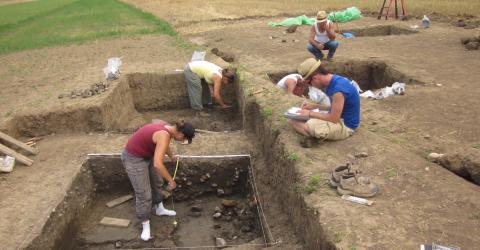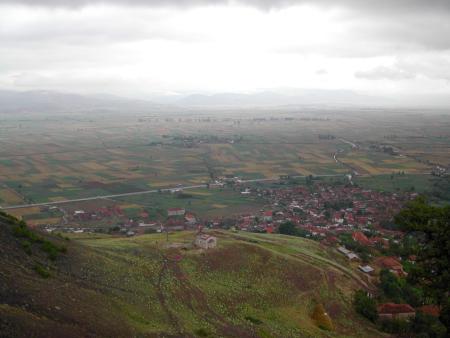
Memories of the Maliq Wetlands
Following WWII, most wetlands in central, eastern, and southeastern Europe and the former Soviet Union were drained.
Albanian wetlands were especially susceptible to drainage, due to efforts to provide arable land within the small, tightly controlled territory during the period of dictatorship under Enver Hoxha. The Maliq lake (Liqeni Maliqit) and its wetland (Këneta e Maliqit), which dominated the landscape of the Korça basin in southern Albania from the time of its formation nearly 10,000 years ago, was drained in the 1940’s as a prison labour project. Now carpeted with vast agricultural fields that mask its former nature, for thousands of years the Maliq wetland had great cultural significance for the people who lived on its margins.
Cultural narratives about this former wetland persist in oral histories, documentary evidence, and archaeological materials. Oral histories attest to the use of a diversity of wetland plants for architecture, food, tools, and other purposes, the hunting and collection of wetland animals—especially eels—for food, and the use of the wetland for pastoral and agricultural activities. Significantly, these accounts also highlight the stark differences in the monetary value of wetland products, such as eels, as compared with the crops that replaced them.
Past material culture is especially important in documenting the cultural values of the Maliq wetland, as it extends the time-depth of cultural narratives to the earliest occupation of the basin around 7,000 B.C. Recent archaeological surveys in the Korça basin and excavation at the sites of Sovjan (ca. 6,500 – 1,000 B.C.) and Vashtëmi (ca. 6,500 – 5,500 B.C.), together with palaeoenvironmental investigation of changes in the wetland itself, have revived modern awareness of the former wetland and its long-term cultural significance.
Continuing research on the Maliq wetland aims to further document human interaction with the landscape and to preserve its memory for the future, in line with Ramsar's Communication, Education, Participation and Awareness Programme (CEPA) strategies. Because this truly interdisciplinary research has significant implications for assessing the role of intended and unintended consequences of environmental transformations on human societies, it contributes to the central goals of the Ramsar Convention.
By Susan Allen, Assistant Professor, Department of Anthropology, University of Cincinnati
© Images courtesy of Susan Allen
